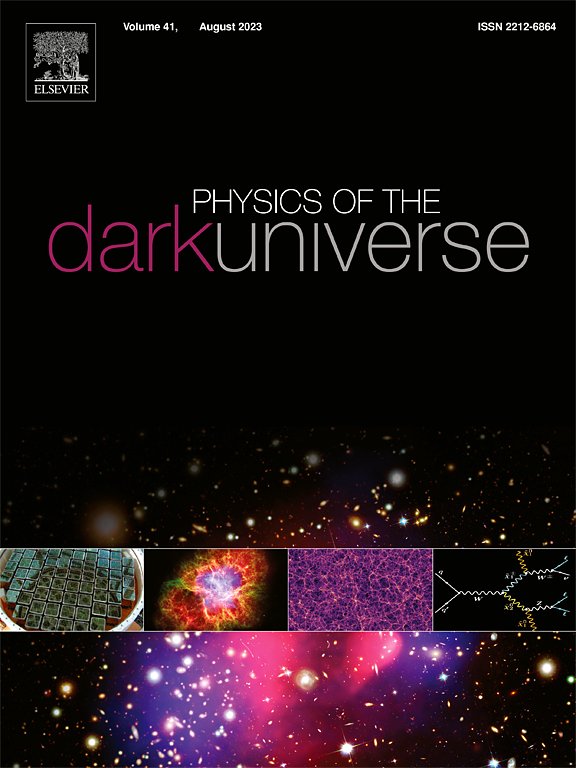IF 5
2区 物理与天体物理
Q1 ASTRONOMY & ASTROPHYSICS
引用次数: 0
摘要
随着近年来对引力波(GW)的探测,许多利用模拟引力波数据集来约束暗能量模型的论文已经发表。然而,这些研究一般都考虑了大质量天体(如黑洞或中子星的合并)产生的引力波。在本文中,我们假设了一个标准的慢滚动单场暴胀情景,分析了暴胀时代产生的全球变暖的演化和频谱。本文考虑了三种背景模型:相互作用暗能量场论模型--相互作用全息超速模型、全息暗能量模型和ΛCDM。研究结果表明,暗能量与暗物质之间的相互作用对宇宙学模型有很大的依赖性,尤其是对光谱的依赖性,并特别表明暗能量与暗物质之间的相互作用会留下重要的印记。因此,未来的原始引力波(PGW)数据集可能对约束暗能量模型非常有用,包括探测宇宙暗部的相互作用。本文章由计算机程序翻译,如有差异,请以英文原文为准。
Primordial gravitational waves: Model effects on time evolution and spectrum
With the detection of gravitational waves (GW) in recent years, many papers that use simulated GW datasets to constrain dark energy models have been published. However, these works generally consider GW generated by massive astrophysical objects, such as mergers of black holes or neutron stars. In this paper, we analyse the evolution and spectrum of GW generated in the inflationary epoch, assuming a standard slow-roll single-field inflationary scenario. Three models for the background are considered: a field theory model of interacting dark energy - the Interacting Holographic Tachyonic Model, the Holographic Dark Energy Model, and the ΛCDM. The results show significant dependence on the cosmological model, especially for the spectrum, and in particular show that an interaction between dark energy and dark matter can leave a significant imprint. Therefore, future primordial gravitational waves (PGW) datasets could be very useful for constraining dark energy models, including to probe an interaction in the dark sector of the universe.
求助全文
通过发布文献求助,成功后即可免费获取论文全文。
去求助
来源期刊

Physics of the Dark Universe
ASTRONOMY & ASTROPHYSICS-
CiteScore
9.60
自引率
7.30%
发文量
118
审稿时长
61 days
期刊介绍:
Physics of the Dark Universe is an innovative online-only journal that offers rapid publication of peer-reviewed, original research articles considered of high scientific impact.
The journal is focused on the understanding of Dark Matter, Dark Energy, Early Universe, gravitational waves and neutrinos, covering all theoretical, experimental and phenomenological aspects.
 求助内容:
求助内容: 应助结果提醒方式:
应助结果提醒方式:


